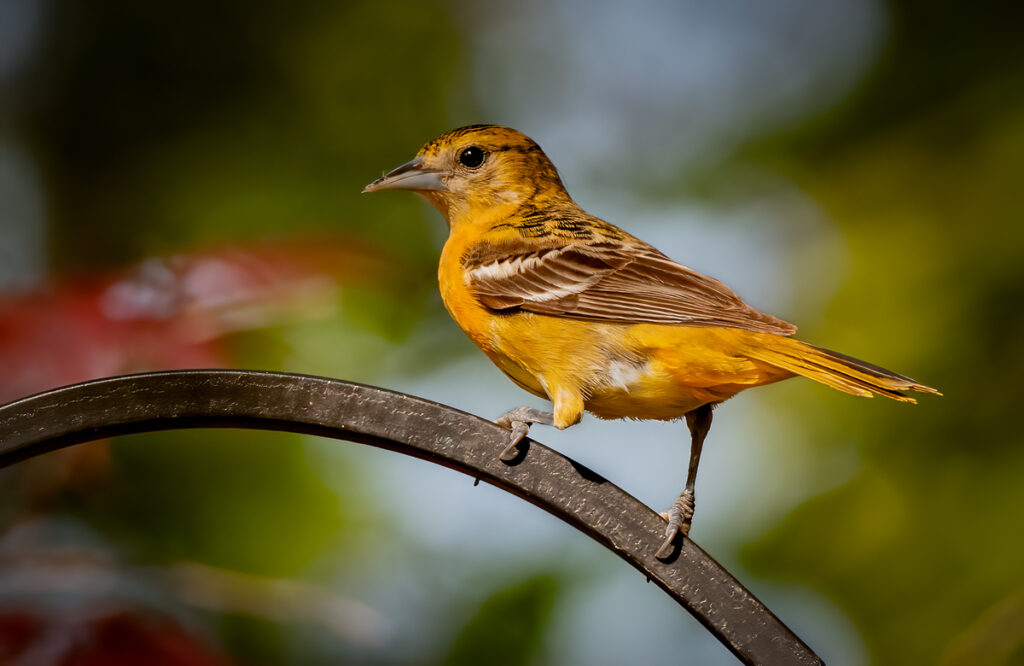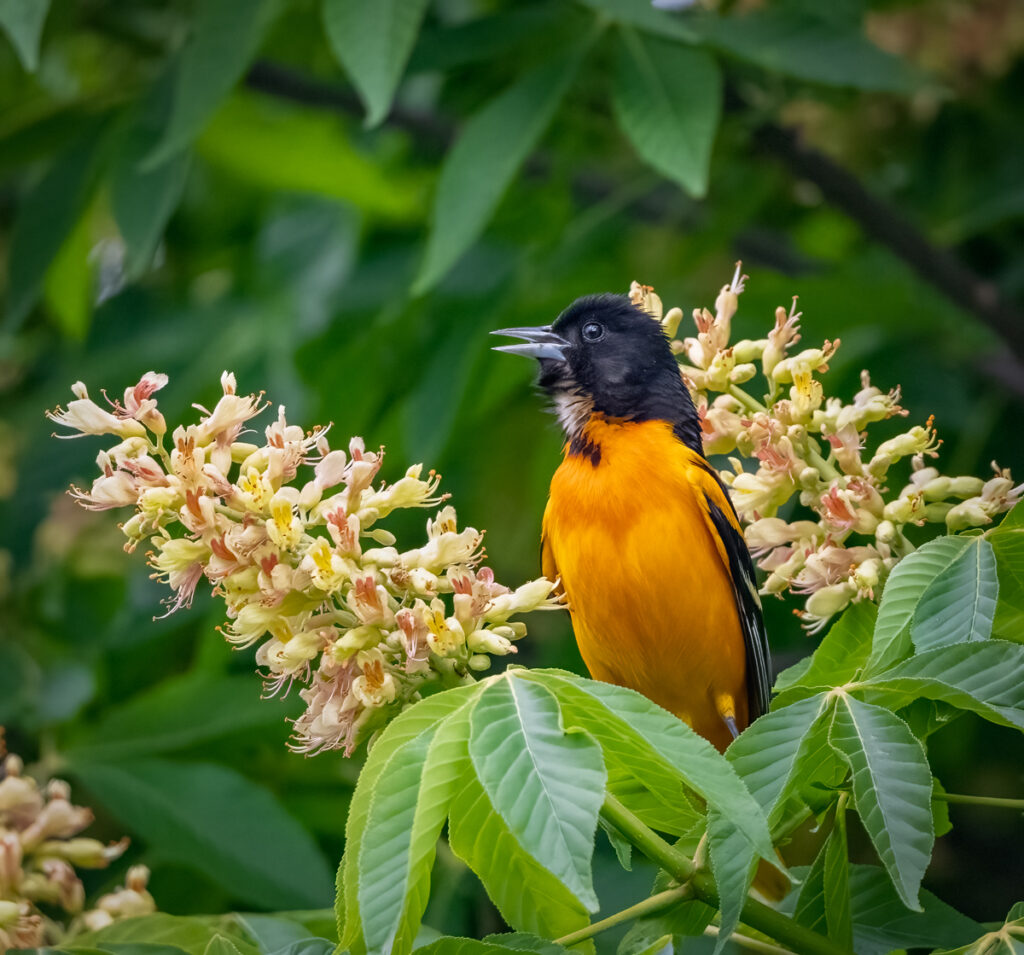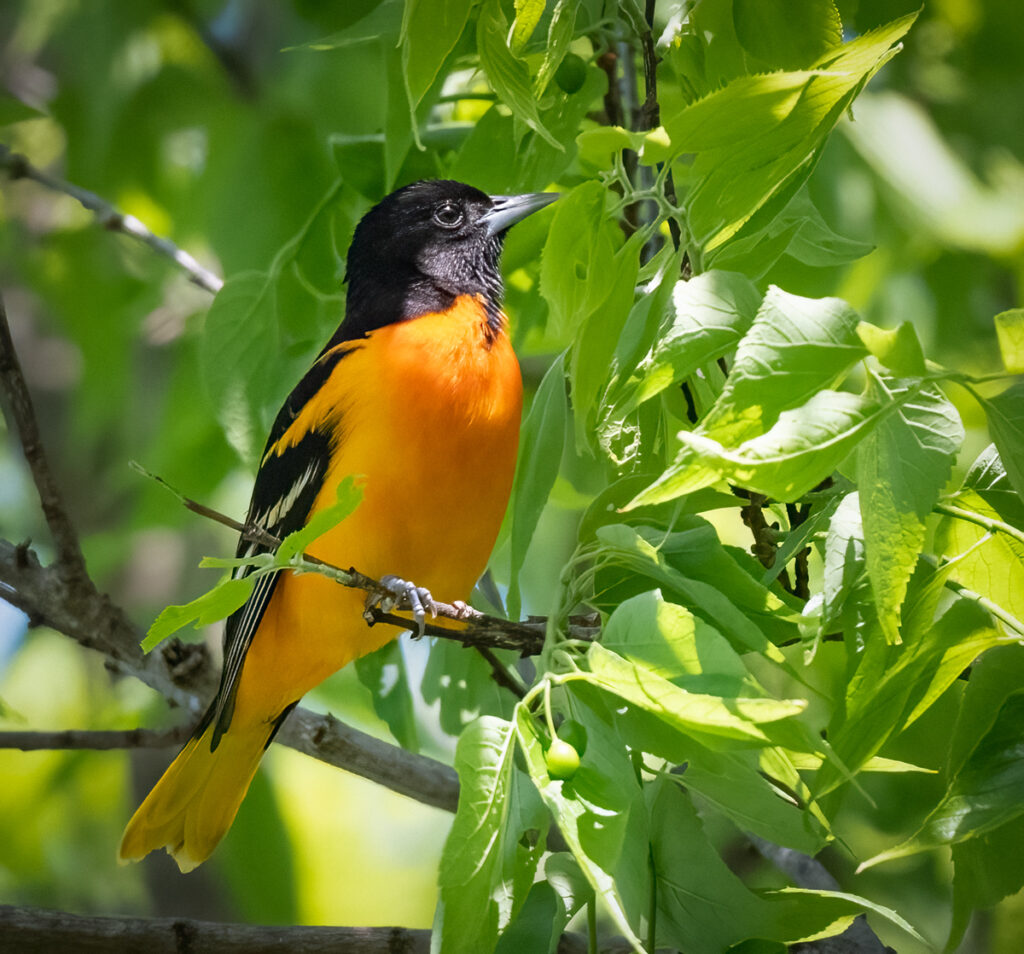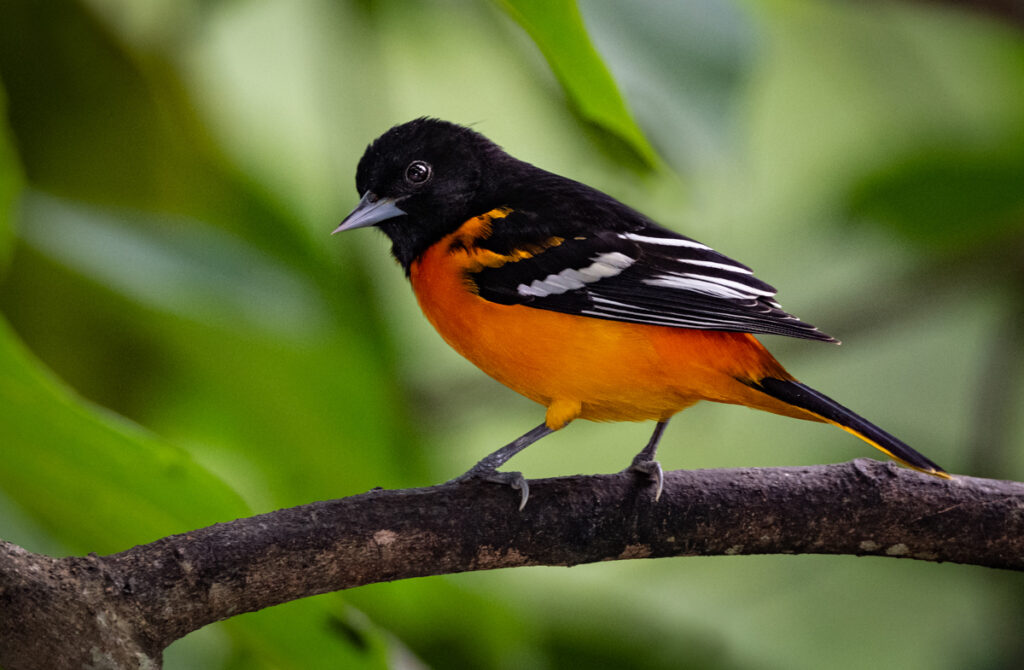
Colorful and distinctive, Baltimore orioles are amazing songbirds and popular subjects for bird photography. Understanding their migration can help birders and bird photographers alike know when to expect these outrageous orange visitors and how best to capture not only their colorful plumage, but also their equally colorful personalities.

About Baltimore Orioles
The Baltimore oriole (Icterus galbula) is a member of the Icteridae family, along with grackles, blackbirds, cowbirds, meadowlarks, and of course, other orioles. In tropical areas, caciques and oropendolas are close cousins of Baltimore orioles.
The brilliant plumage of these birds makes them fantastically eye-catching. Males have a rich black hood but bold orange underparts and an orange rump. A broad white bar stands out on the wings, next to an orange wedge on the shoulder. Females are more muted, gray where males are fully black and paler yellow-orange where males show bold color.

Both males and females have a gray-silver, sharply triangular bill adept at whistling notes and chattering calls as well as taking advantage of various foods. Baltimore orioles eat fruit, buds, and nectar in spring and fall, but throughout the summer shift to eating mostly insects for the rich protein necessary for their hungry hatchlings. In backyards, these birds are well known for their sweet preferences, and will frequently visit feeders where orange halves, grape jelly, and sugar water are available. Because the birds come so easily to feeders, they can be great for even novice bird photographers to study and capture.
In natural habitats, Baltimore orioles prefer open woodlands such as groves, orchards, and forest edges, but are rarely found in denser plantings. They often flit through the tops of the tree canopy as they seek out insects, which can make photographing them more challenging – a long and or telephoto lens is a must, a minimum of 400mm, and a fast shutter speed will help bring their quick movements into sharp focus. These are acrobatic birds as they forage, making them fun photography subjects, and they will occasionally sally out from favorite perches to snatch insects in midair, a stunning shot for photographers who study the birds’ behavior in order to follow their movements well.

Baltimore Oriole Migration
The Baltimore oriole’s range stretches from northern South America, Mexico, the Caribbean, and the southern tip of Florida in winter to the midwestern United States and into southern Canada during the summer breeding season.
In spring, Baltimore orioles are among the earlier migrants, beginning their journeys when their breeding range is still in the grips of winter. But they move north gradually as early fruits and spring berries ripen, arriving in northern Illinois, Indiana, and Ohio – the central core of their breeding range – in mid- to late April. For bird photographers, there is no more iconic spring image than a colorful Baltimore oriole alighting in a blossom-filled tree.

By mid-May, these songbirds have reached even the northernmost part of their nesting grounds, and breeding begins in earnest, while by the end of June, most Baltimore orioles have nested and young birds are abundant. This time is ideal for great shots of stoic parents bringing mouthfuls of insects to their perpetually hungry chicks. As soon as early July, some northern birds start gradually moving south once more, and the peak of autumn Baltimore oriole migration is in late August or early September.
Just as October ends and the orange and black colors of Halloween are most popular, the orange-and-black plumage of the Baltimore oriole has all but vanished from its breeding range. Some stragglers or unexpected vagrants may still be seen, but these birds largely vanish from our yards and lenses just as autumn’s brilliant foliage colors overtakes the birds’ bright colors.
By understanding how Baltimore orioles move and when during the different seasons they can be seen, bird photographers can plan visits to the proper habitats to capture these colorful birds in all their boldness.


